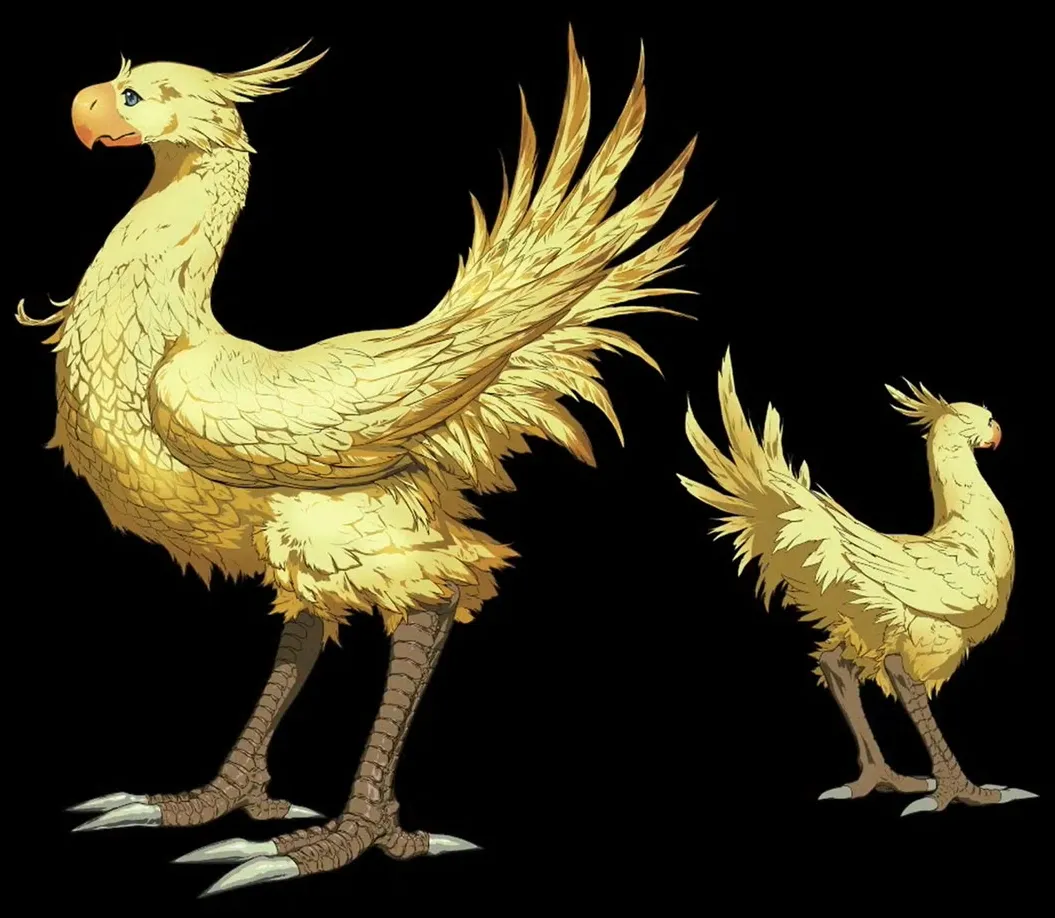Phew, a whole week without posting.
It's been a pretty hectic time for my creativity the last week, for sure, at least in the writing department. Typically I write in my free time at work, but with Grade 12 finishing off their finals and getting ready for graduation, it comes with a whole lot of other events and such that just keep me busy in the work day. Combine that with last week being Covid Week for both my girlfriend and I, and I'm left with almost no room during the day for a moment of writing.
I guess I'm a bit spoilt because I'm so accustomed to having a big hall to myself most the time during work, which has been stripped from me mostly this year, but even more so in the last week or so.
That being said, my lack of writing words has transferred slightly perhaps to creativity in music.
For years now, I've been musically creative only really in an educational context. I'll write short pieces, transcribe, or learn to perform or improvise over various things in the name of education, but once these are used up, they get thrown into a proverbial folder in my brain and left to rot. Nothing ever needs refining or mixing or perfecting. They're just made to make a brief point in a class.
When it comes to actually making original music or learning a new piece on guitar that challenges me rather than 9th grade kids, these are rare moments indeed.
Well, for the first time in a long long time, I actually wrote some music!
Granted, it's not new exactly. I came across a Verrrrrry old piece of music by myself. Uploaded online almost a decade ago in a folder named something like 'remnants of music from long ago', suggesting at least 15-20 years ago when I first wrote it. I suppose it was early University days, 2006-ish.
At the time I was into the idea of creating Game music a la Nobuo Uematsu, and I had just acquired his 1994 solo, non-game album Phantasmagoria, a seemingly pretty rare and obscure album, to say the least. But it inspired me greatly. There was just something about its choice of instrumentation, blend of Japanese poetry, and wishy-washy reverb production efforts that grabbed my soul's attention.
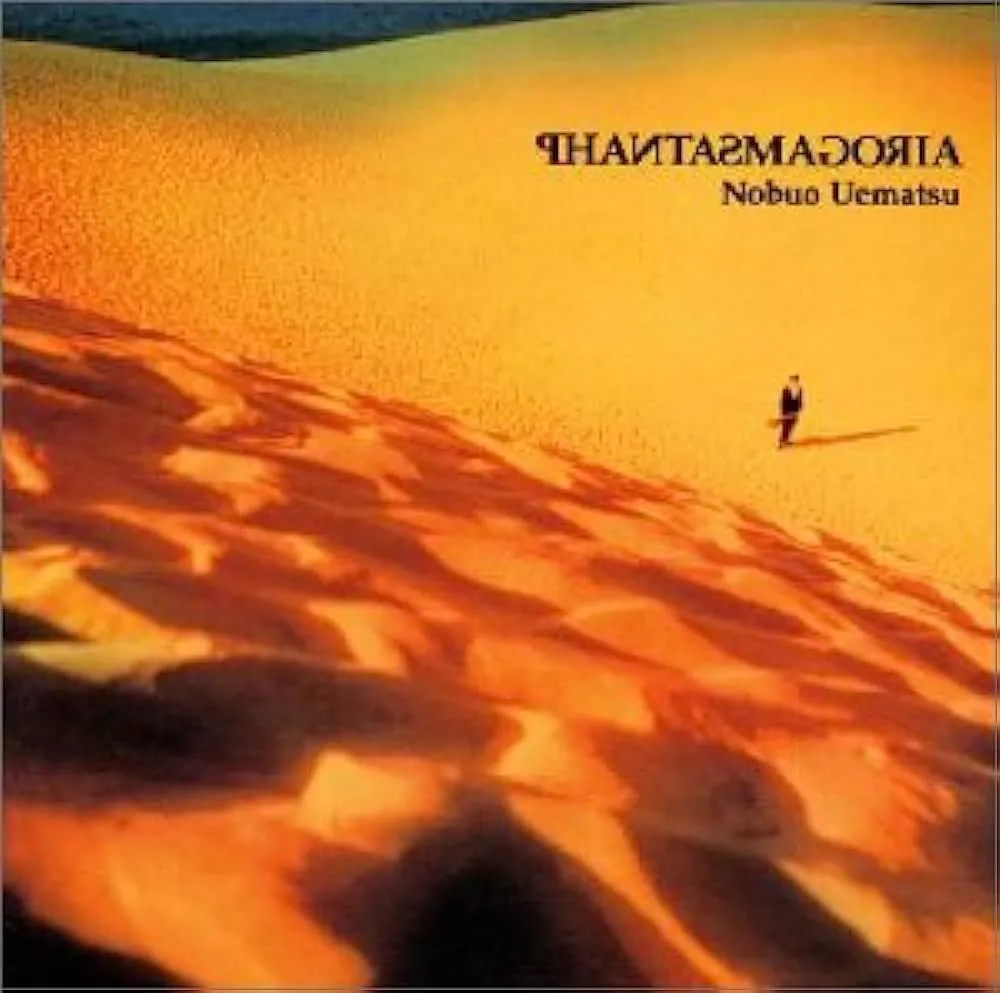
So, given this old piece of mine was named 'Phantasmagoria', and sounds blatantly inspired by it, 2006 is a pretty good date guess.
However, I've gone through an infinite number of laptops and hard drives since then, so any record of the score is hopelessly long gone.
Thankfully, it's a mighty simple piece, so I took it upon myself to re-transcribe it, perhaps later update it to something more substantial.
The original intention was to create a simple, Midi-quality loop as you might hear in an old Final Fantasy game. The problem is that I changed key halfway through, which means the pitches all shifted up. You can't loop from a higher point without first going back down.
Well, given that I changed key without really knowing how to actually do that back then, I certainly couldn't figure out how to change back. And so I just left it to fade out. This is something I wanted to remedy in my transcription, making it completely loop-able.
The thing is, I personally think this piece of music is really good.
I think the whole thing captures a beautiful simplicity that I always struggled with even today, and is the key component of making a Final Fantasy soundtrack vibe so well with the games. A catchy melody with sequence, an interesting recurring motif, a two-chord mixolydian vamp (I didn't know what that was at the time, I'm pretty sure).
I think the fact I didn't really know what I was doing, yet had an extensive listening experience through my entire childhood, is why I was able to create something so quintessentially... Fantasy.
If I tried it nowadays, I would have a high risk of implementing way too much knowledge, by adding secondary dominants, tritone substitutions, altered scales, chromaticism, extended techniques. And in the end, I'd probably just get a bloated piece of music that isn't remotely memorable.
Thankfully I don't make music anymore lol. So here it is, pure and unadulterated by the present-day me.
Take a listen:
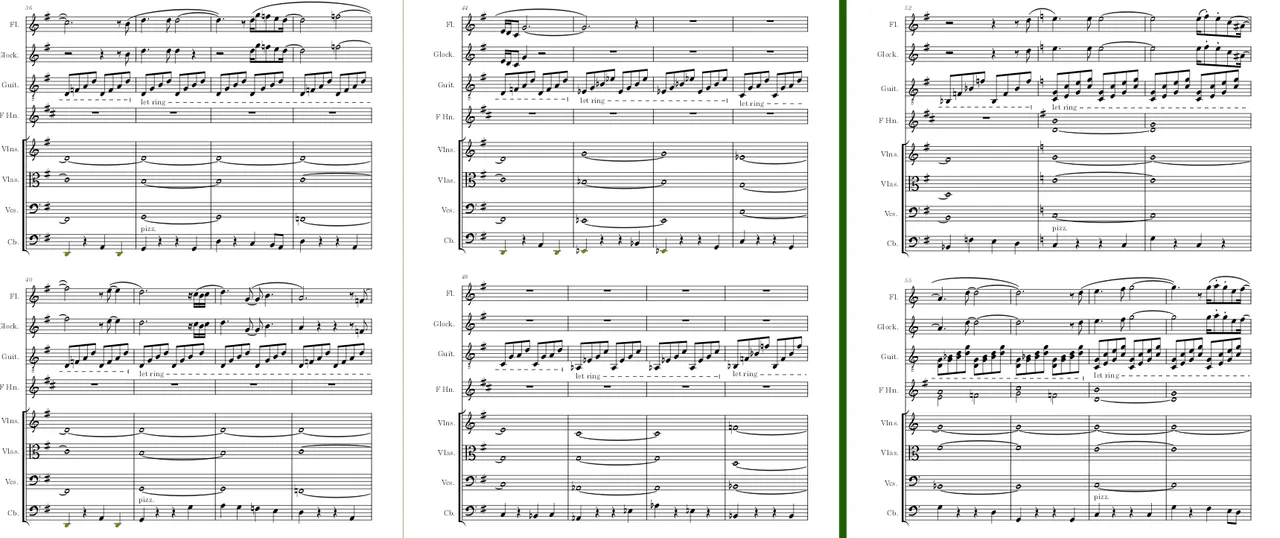
BEAUTIFUL RIGHT??
What do y'all imagine the scenery the music depicts as you explore some MMORPG fantasy game?
Here's a quick breakdown:
Warning: from this point on it's gonna just be a boring analysis of my old music
The Vamp

This is the repeating pattern going between chord I and V, or 1 and 5, although it's slightly altered due to the mixolydian mode. This just means the 5 chord is minor instead of major in this case, which is what that little symbol next to a couple of the notes does.
I like that I rearranged the notes to keep the purple note, D, called a Pedal tone. It just means a single note continues through two or more chords. It gives a sense of stability, anchoring your ears in place so you can venture into more harmonically interesting places without getting lost.
The Motif

I think this is pretty unusual in a cool way. It's syncopated meaning the notes come on the off-beat/weak beat/up beat, and with extra jumpiness created by a couple of little dots under the note, Staccato, meaning to play those notes in a shorter, more detached and jumpy way. This little motif in purple repeats in each melodic phrase to help create the theme.
However, while the first and last note in this first one is a tritone apart (3 tones), the second one is only 1 tone apart, and the third time returns to the same note. This has quite a cool effect I definitely didn't think about at the time of writing it, but it means the earlier rendition goes lower into a more relaxed state, while the reduction in space between the second and third means the whole 'average' of the motif gets pushed up, creating more tension. The sequence climbs higher on average which also brings that feeling of a climactic moment arriving, before the fourth phrase where the melody differs to finish it all off.
The Strings
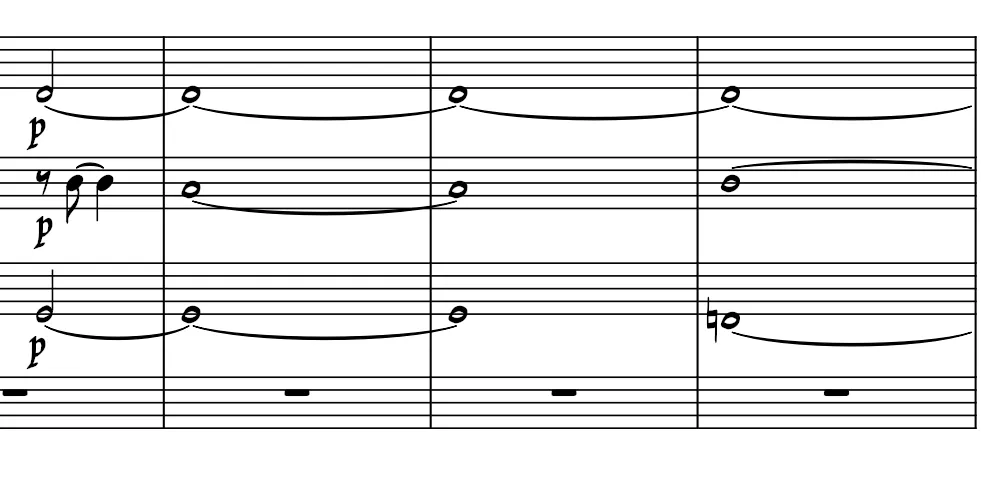
Simply, we get some midi strings coming in. Normally you'd spend more time voicing these to interact and play with each other more stylistically, but I think the way I originally had them works great. By having the Bass go from G to F, it enhances the mixolydian feel, and giving it a minor 7 feel rather than just a minor just has a softer and lighter tone.
Soon, the Double Bass comes in with some Pizzicato - strings plucked with the fingers, rather than bowed:

This specific choice was ripped right outta the Phantasmagoria album, I'm certain of it. Lots of space between the notes, simple and repetitive with slight variations.
The Glock
Layering up, the Glockenspiel comes in and simply doubles the melody in verbatim:
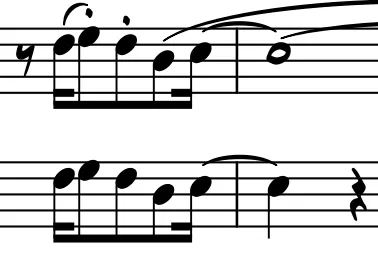
The Key Change
This is pretty clumsy, but I like it!
The 2-chord vamp is simply G-Dm.
To repeat the section in a new key, you have two choices, you can just suddenly shift into a new key without any preparation, or you can prepare. I apparently went with the latter by going a pretty convoluted route, from the key of G major, to the pretty closely related C major.
G - Dm - Eb - Cm6 - Ab major 7 - Bb - C.
The end is pretty clever, albeit accidentally. It creates a nice bVI-bVII-I into the new key. This is a very common set of chords you'll often hear at the end of many rock pieces, for example. The 'b' chords are borrowed from the minor key and again, gives us the mixolydian feel that has been pushing throughout the entire piece.
You see, modes, like mixolydian, are hard to maintain when you venture to too many different chords. They don't hold a strong tonal centre like your typical major-minor keys that 99.999% of western music is written in. So by plonking in that bVI-bVII-I at the end of the convoluted key change, it's like refreshing your memory, prepping your ears to get back into that mixolydian place they belong.
The key of C is 4 degrees higher in pitch compared to G, and for flute, I think this is gorgeous. Any time you reach these higher registers, the energy just makes you float away to heaven.
The Horns

Pretty sure I got this right, but yeah not much to say here. They come in real subtle towards the end in the new key of C just to add a bit more colour.
The Loop
Here I had to get back from C to G to complete the loop I never could.
This is pretty simple and I wanted to give a pretty basic and a little stark change, to suit the style of the first change. To do this, I basically created a ii-V-I (2-5-1) series of chords as if we were already in G. 2-5-1 in G is Am-D7-G.
Fortunately, my original key change goes chromatically - a half step - to begin the change. If I just went another half step up, I'd land conveniently on the 2. Perfect.
Now we're back in C, loop it and listen forever!
It was so easy to do, and super fun. Makes me re-contemplate the idea of composing a whole game soundtrack for a game that will never exist XD
